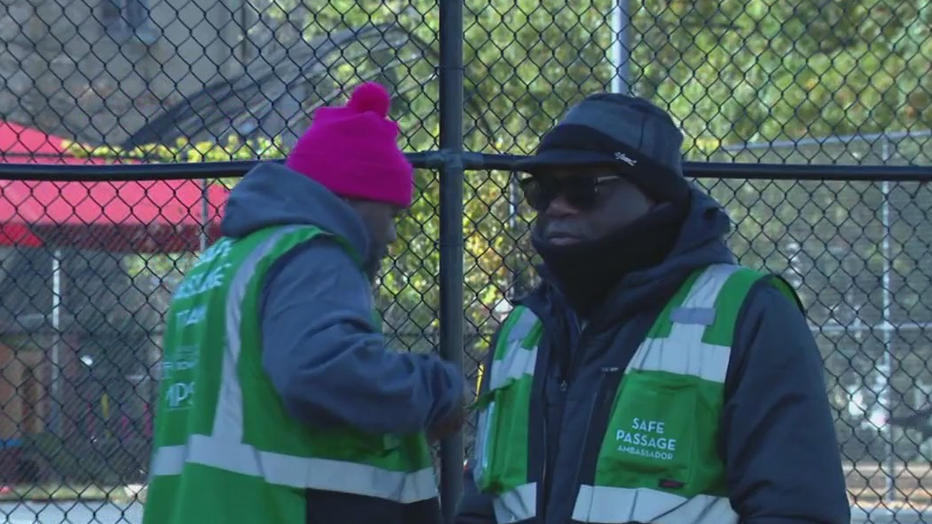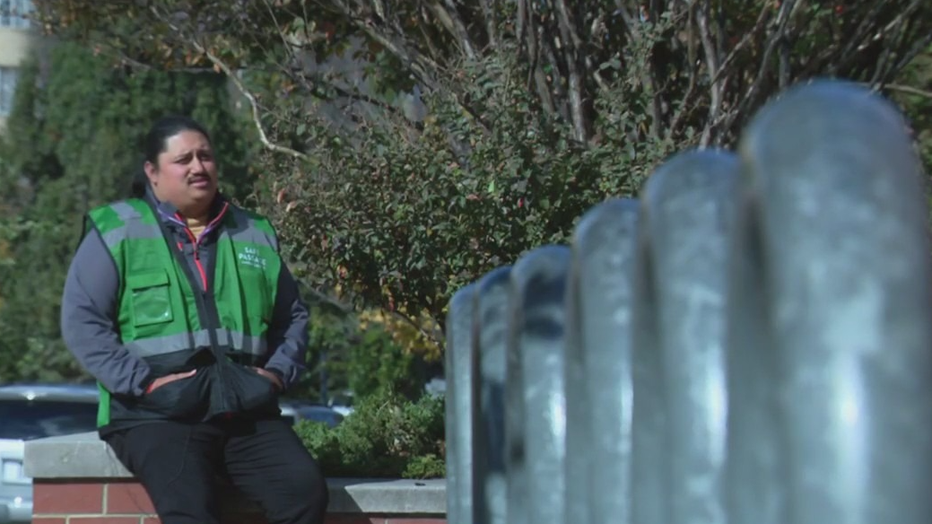DC's Safe Passage program receives $8.5M boost to protect students amid rising crime

DC's Safe Passage program receives $8.5M boost to protect students amid rising crime
The Safe Passage program isn't new to the District, but there is now additional funding for the community initiative that helps keep kids safe going to and from school. With the recent rise in crime, leaders say now, more than ever, is the time to make sure young people are protected inside and out. FOX 5's Nana-Sentuo has the story.
WASHINGTON - The Safe Passage program isn't new to the District, but there is now additional funding for the community initiative that helps keep kids safe going to and from school.
With the recent rise in crime, leaders say now, more than ever, is the time to make sure young people are protected inside and outside the school building.
There are more than 1,500 students coming in and out of CHECC, Columbia Heights Educational Campus every day.
"We have to be inside the building where staff and students need our support," said DeWayne Boone, assistant principal of intervention at CHECC.
But outside the building, leaders have some help.
"They are our eyes and ears outside of the building during those key transition times, before school after school," Boone explained.

DC's Safe Passage program receives $8.5M boost to protect students amid rising crime
He's referring to the men and women who wear the green vests.
Between 8 a.m. — 10 a.m. and 2:30 p.m. to 5:30 p.m., guys like Rubio Gomez help students get to their destinations safely.
Whether it's walking with a crowd of students heading home or to the metro.
The Safe Passage program under Mayor Muriel Bowser's Office for Public Safey and Justice has three to six ambassadors at eight schools in high-priority areas in the District and at a metro station.
Bowser is awarding $8.5 million to help fund the program.
"When we see certain actions taking place, like a kid could be in danger, maybe somebody is following him. Maybe, he is being bullied. We intervene," Gomez said.
Gomez, who is currently a supervisor overseeing five schools, says monitoring and protecting students at CHECC is special.
He graduated from the campus back in 2012.
"I went here. I look at is as giving back to the school," he said with joy.
It's a program he wishes was around when he was growing up.
"It would’ve stopped a lot of crime going on in the area, especially gangs," he said.
Boone says time and time again, Safe Passage workers come to the rescue.
"We had an older gentleman who was pretty much harassing students. We were inside the building getting ready for dismissal. They called us immediately, let us know what was going on, and we were able to get outside, reroute our students away from the individual so that MPD could support him. If they weren’t there, something bad could’ve happened," he said.
In situations where safe passage workers suspect someone or something suspicious, they get school administration and the police involved.
Acting Police Chief Pamela Smith with the Metropolitan Police Department says this program is a crucial partnership with the schools.
"Having Safe Passage, they can share information with us. We can intervene and some of the conversations and things that they are hearing that are going on with some of the children," Chief Smith said.
The program has also been especially helpful for children who are hesitant to speak up.
"We have a super diverse population; I’d say a 60% Latino population," Assistant Principal Boone said.

Between 8 a.m. — 10 a.m. and 2:30 p.m. to 5:30 p.m., guys like Rubio Gomez help students get to their destinations safely.
Gomez explains that "some of them don’t feel comfortable speaking to anybody else because they just moved to the school or the country itself."
But having men and women just like Gomez, makes a difference.
"They are a voice for families or students who aren’t 100% comfortable sharing things they will share with Safe Passage – who will share with us, and we can all sit down and mediate situations before they escalate and become bigger," Boone said.
Collectively, approximately $8.5 million is being awarded to four community-based organizations for program components which include:
- Monitoring student commute routes within the assigned to priority areas.
- Working collaboratively with schools, relevant District agency staff, other Safe Passage teams, and the surrounding community to identify, intervene, diffuse, and report community violence.
- Supporting attendance by encouraging students to attend class daily and on time.
- Positively engaging students, families, businesses, civic associations, institutional facilities, and community members within the priority area to build support for the Safe Passage program.
- Ensuring staff suitability and participation in all training and technical assistance.
- Collecting and analyzing program data to identify trends and ensure proper program implementation.

